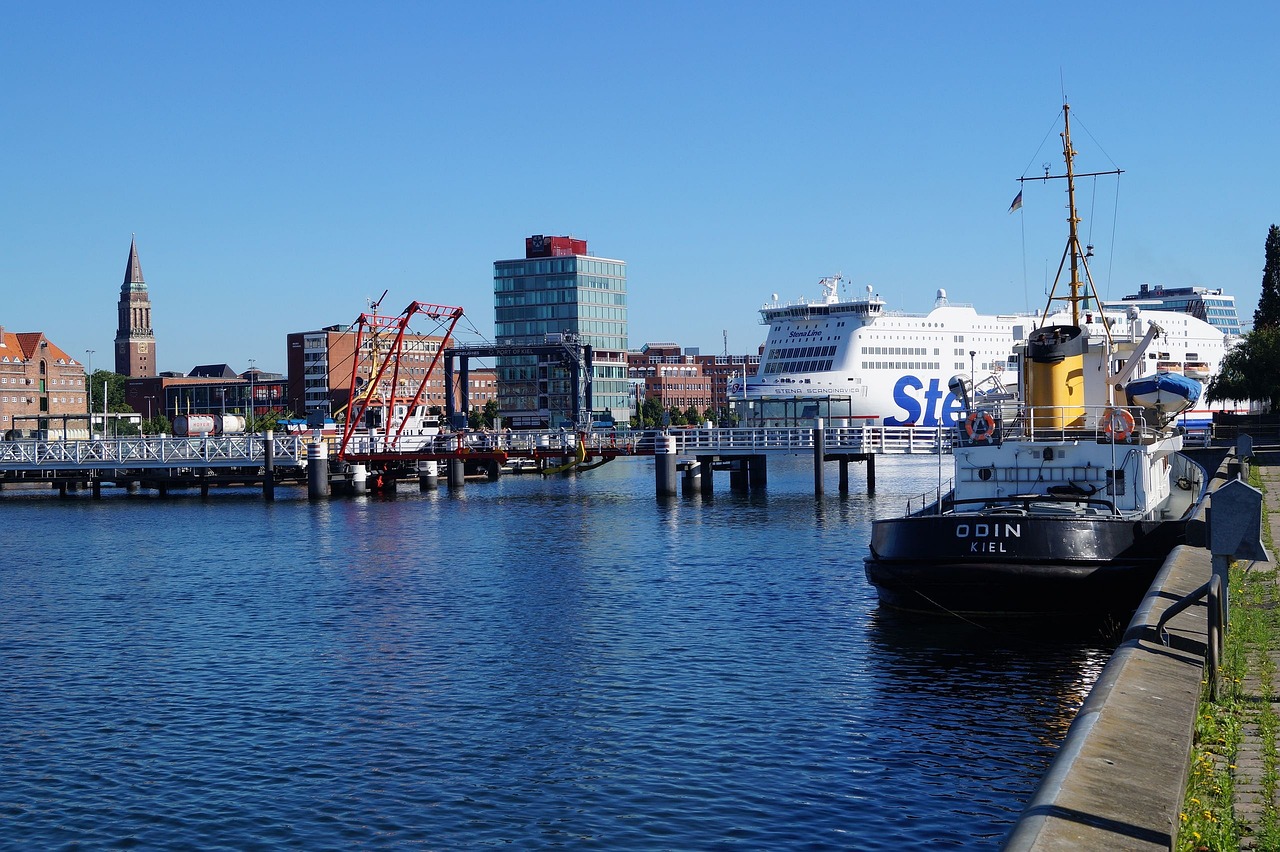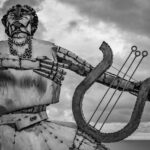Odin, revered as the chief deity within the Norse mythology, is often recognized by his moniker “the one-eyed All-Father.” He embodies the roles of creator god, father to humanity, and progenitor to numerous Norse divinities. As the god of war and wisdom, Odin is the protector of wanderers, proficient in the arts of magic. His dominion extends to Valhalla, a majestic hall receiving half of the warriors who perish in battle. The Viking realm was profoundly influenced by his presence. Here are ten salient facts about Odin, the All-Father.
1. Odin the All-Father Brought Midgard into Existence through Ymir’s Demise
Odin is credited with shaping Midgard and instilling life in mankind, thereby positioning him at the core of the Norse cosmology. In the beginning, the collision of the warm currents from Muspelheim and the frigid winds from Niflheim in Ginnungagap produced a primordial broth that gave rise to all existence, birthing Ymir, the first giant, and Buri, the first god.
As the giants proliferated, Odin and his brothers grew concerned about Ymir’s rapid reproduction, leading to their decision to eliminate him. Upon slaying Ymir, his blood engulfed the giants’ realm, with only two surviving—a theme reminiscent of the universal flood narrative. Odin and his brothers then repurposed Ymir’s remains to construct their new domain: the land, oceans, mountains, cliffs, and trees were all derived from his body.
The creation of humanity followed, wherein Odin fashioned a man and a woman from two tree trunks, bestowing life, spirit, movement, adornments, and names upon them.
2. An Ancient Deity
Odin’s worship predates the Viking age by centuries. In the first century, the Roman historian Tacitus observed similarities between the Germanic god he referred to and the Roman god Mercury. This god, identified as Wodin among Germanic tribes, was associated with the attributes of fury and madness, in addition to war, death, wisdom, and poetry.
Artifacts from the Migration Period also signify Odin’s longstanding significance as a deity related to warfare. A notable gold bracteate illustrates a warrior accompanied by inscriptions affirming his loyalty to Odin.
3. The Patron of Warriors
Despite Thor’s reputation as the strongest deity with his formidable hammer Mjolnir, Odin was recognized as the true god of war, leading the Aesir into combat and determining the victors in mortal conflicts. The Aesir and another group of gods, the Vanir, had their clashes, during which Odin remarkably led his faction against the Vanir.
Odin’s warriors often invoked his favor by casting spears over their adversaries before battle. His Valkyries, divine maidens, assisted in selecting noble warriors to ascend to Valhalla, where they would prepare for the inevitable clash during Ragnarök.
4. The Seeker of Wisdom
Odin, while embodying the essence of war, also emerged as a deity of wisdom. His insatiable thirst for knowledge propelled him to extreme sacrifices, including offering up his eye for a drink from the Well of Wisdom. The loss of his eye is a defining characteristic in his depictions.
Moreover, in the pursuit of learning the secrets of runes, Odin endured nine days of hanging from the Yggdrasil tree, leading him to gain profound esoteric knowledge that he later imparted to humanity.
5. A Master of the Arcane
As a skilled practitioner of rune magic and the Norse mystical art of Seidr, Odin’s magical prowess was highly esteemed. His request for instruction in Seidr elicited surprise, as this magical tradition was generally regarded as feminine—and thus, inappropriate for men.
From his endeavors, Odin garnered spells capable of effecting healing, evoking calm, warding off weapons, and enchanting the elements. His mastery of magic allowed him to manipulate various mystical realms.
6. Odin’s Animal Companions
Odin’s portrayal in Norse art is often accompanied by key symbols such as his two ravens, Huginn and Muninn, representing thought and memory, respectively. They served to gather information from the nine realms, constantly reporting to him.
Additionally, he is frequently depicted with two wolves named Geri and Freki, embodying the duality of strength and control. Odin also rides Sleipnir, an extraordinary steed capable of traversing the nine realms.
7. Conductor of the Nine Realms
Odin was distinguished as an omniscient being residing in Asgard. However, he frequently traversed the world incognito, offering wisdom and engaging in various narratives. His appearances in sagas often functioned to advance the plot, while revealing his multifaceted character.
In one tale, disguised as an old man, he imparts crucial knowledge to a young prince who aids him, showcasing both his wisdom and the cunning nature that parallels Loki’s propensity for mischief.
8. The Brotherhood with Loki
Contrary to modern portrayals, Odin and Loki’s bond was forged through a blood pact rather than an adoption. Their adventures together lead them through intricate narratives embedded in Norse mythology. Loki’s actions often resulted in chaos among the gods, a consequence of his cunning and manipulative strategies.
9. Odin’s Many Offspring
Odin was a prolific father, having fathered numerous divine children—including Thor, who is most recognized. The legendary bard Snorri Sturluson recorded as many as fifteen sons. These progeny often had mothers hailing from giant lineage, illustrating the complex interactions between the Aesir gods and giants.
Most notably, Balder, Odin’s son with Frigg, became a central figure symbolizing beauty and tragedy, intertwining his fate with Loki’s deceitful machinations.
10. Foretold Demise at Ragnarök
Aware of his destined fate during Ragnarök, Odin prepares for the ultimate confrontation by assembling fallen warriors in Valhalla. As the prophetic events unfold—including environmental upheaval and the chains of Loki’s release—Odin readies for the battle, fully knowing that he shall meet his end at the jaws of the great wolf Fenrir.
His death is foretold to lead to the ascendancy of his son Vidarr, who has the means to avenge him. Despite this, the climactic battles will result in the renewal of the world after its consumption by flames, ending the era defined by Odin the All-Father.





